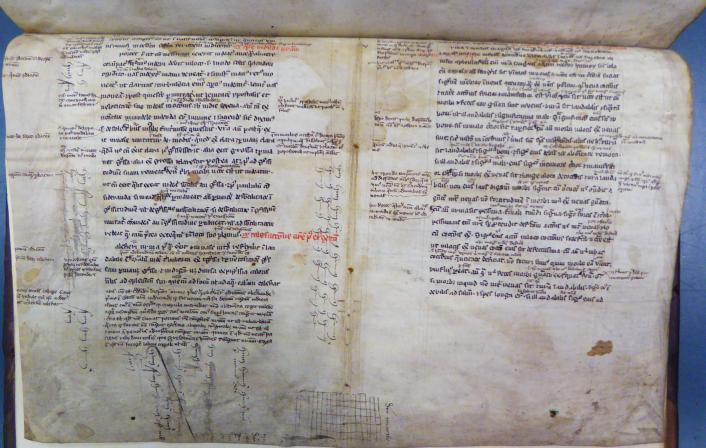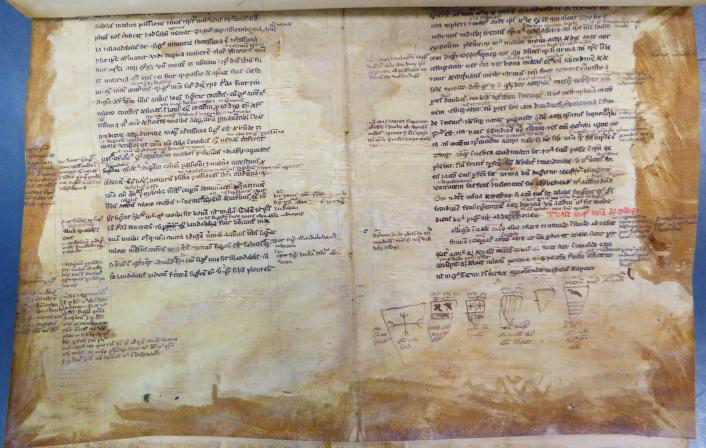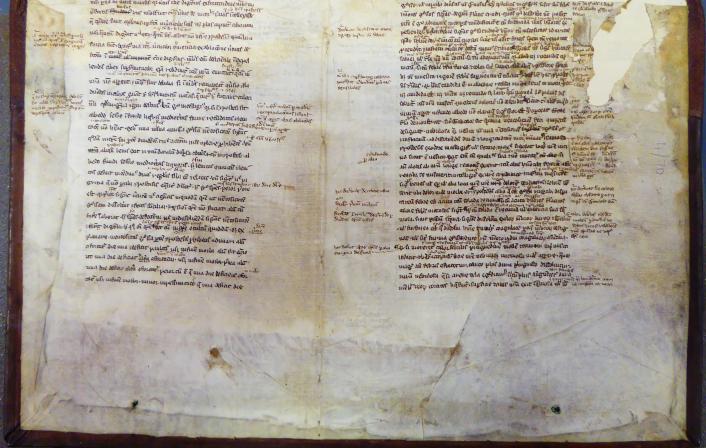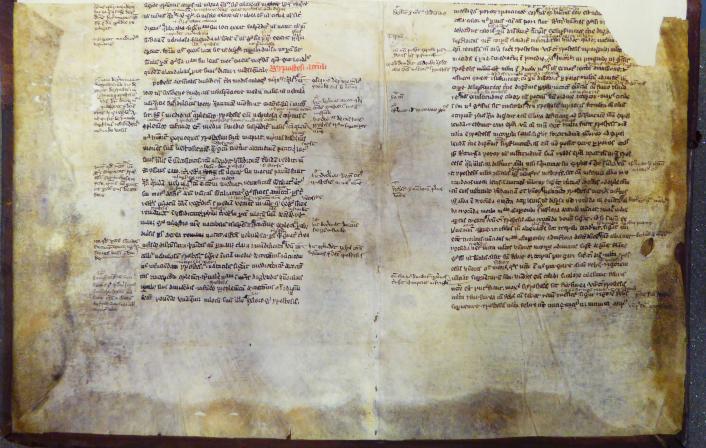Type
Lost Manuscript
Babel MS 25
The fragments identified to date all come from a relatively short work and presumably sat within a larger volume, perhaps a copy of the ars medicinae known as Articella. The glossing of the text, clarifying the meaning, suggests that this was a copy intended for practical purposes. It may not have been consider useful for very long, however: the doodled coats-of-arms added to H.b.25 ii suggests that in the fourteenth century at least one owner was not concentrating on the text.Three bifolia survive, which, judging from the text they provide, come from two separate quires.
Constituent Fragments



